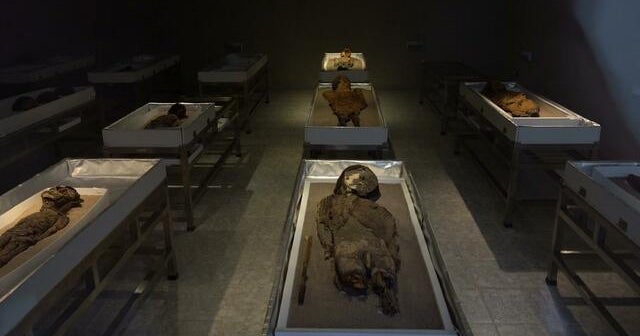
The world’s oldest mummies have been around longer than the mummified pharaohs of Egypt and their ornate tombs – but the ravages of time, human development and climate change are putting these relics at risk.
Chile’s Atacama Desert was home to the Chinchorro people, an ancient people who began mummifying their dead 5,000 years ago, 2,000 years before the Egyptians did, according to Bernardo Arriaza, a professor at the University of Tarapacá.
The barren desert has preserved mummified remains and other environmental clues that give archaeologists information about how the Chinkuro people lived in the past.
The idea for mummification likely came from observing other remains undergoing the process naturally amid the dry conditions of the desert. Mummified bodies were also decorated with reed blankets, clay masks, human hair and more, according to archaeologists.
Although UNESCO has designated the area a World Heritage Site, the designation may not save all the artifacts. Several museums, including the Miguel de Azapa Archaeological Museum in the ancient city of Arica, showcase the Chincoro culture. Some mummies and other artifacts are safely preserved in these climate-controlled exhibits, but those still hidden in the barren desert are at risk.
“If sea surface temperatures rose, for example, across the coast of northern Chile, this would increase atmospheric humidity. This in turn would lead to decomposition,[in]places where there is no decomposition today, and the mummies themselves would be lost,” says Claudio Latorre, a paleoecologist at the Catholic University of Chile.
Other evidence that archaeologists might find in the environment may also be lost.
“Climate change caused by human activities is one of the aspects that really worries us, because it will change a number of different aspects that make up the desert today,” Latorre said.
Ariaza is working to raise awareness about the mummies, hoping it will lead to more preservation.
“It’s a very big challenge because you need resources. It’s everyone’s effort to achieve a common goal, which is to preserve the site, to preserve the mummies,” Arriaza said.




More Stories
Journalists convicted in Hong Kong sedition case
Stand News: Hong Kong journalists convicted of sedition in case critics say highlights erosion of press freedom
Shark decapitates teen off Jamaica coast